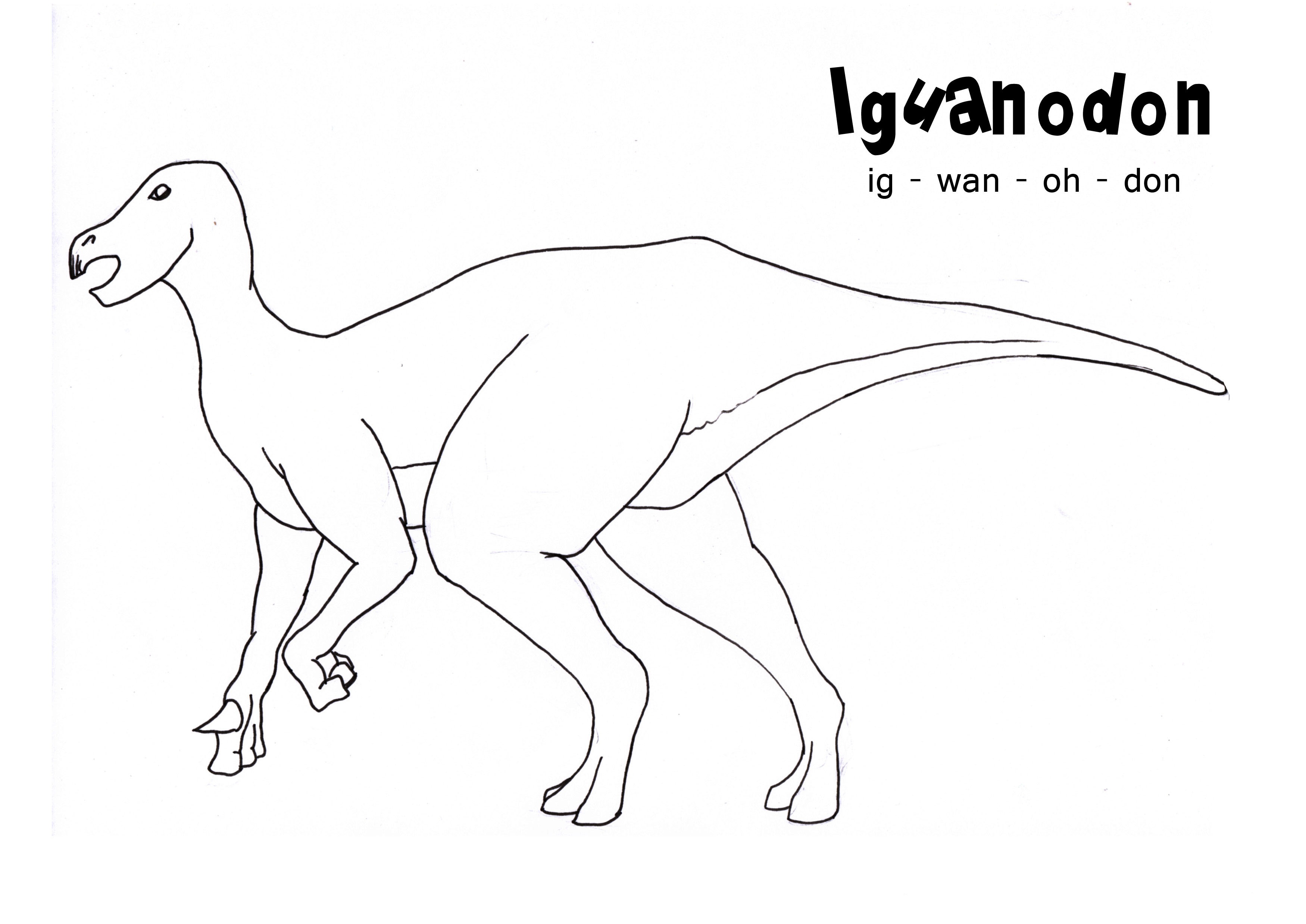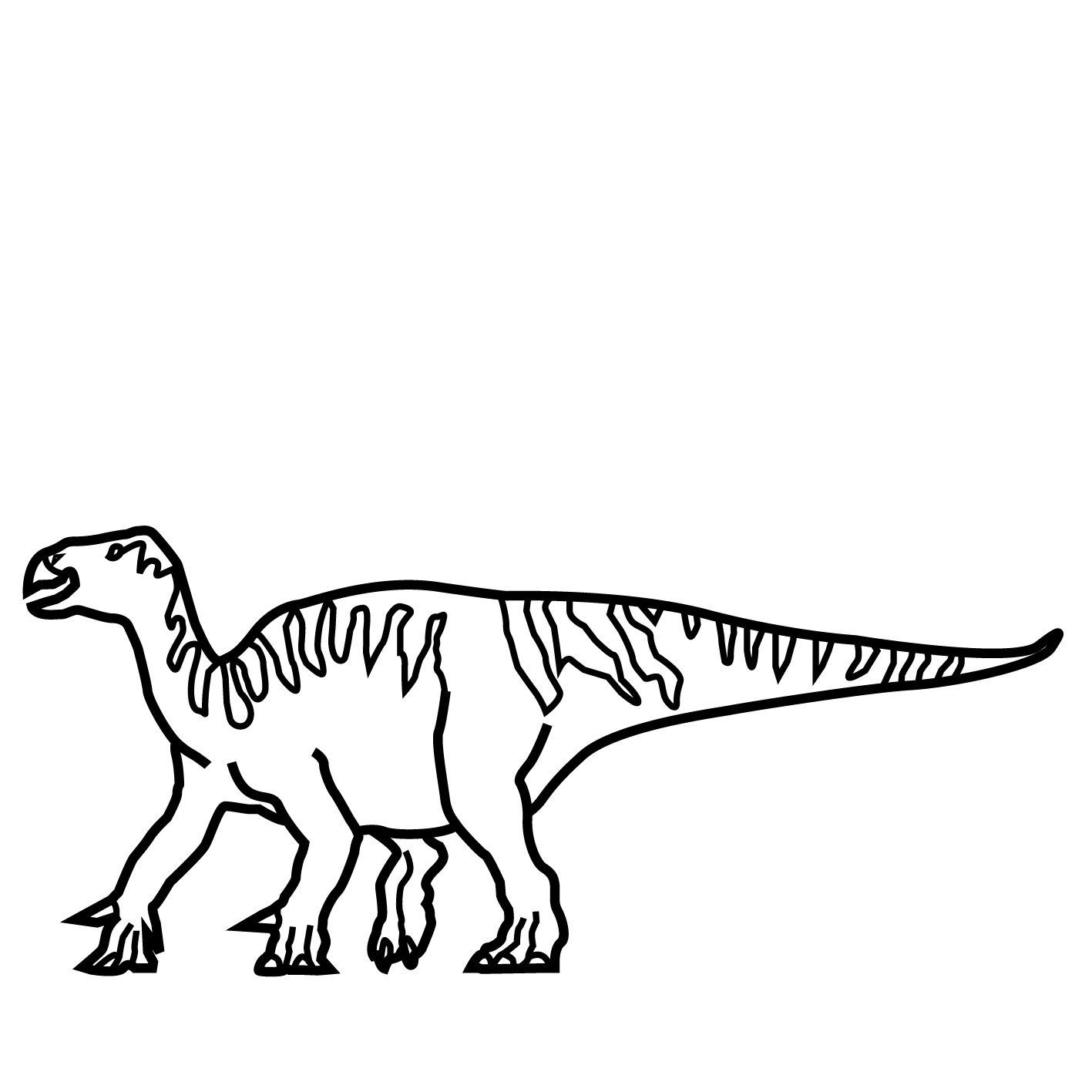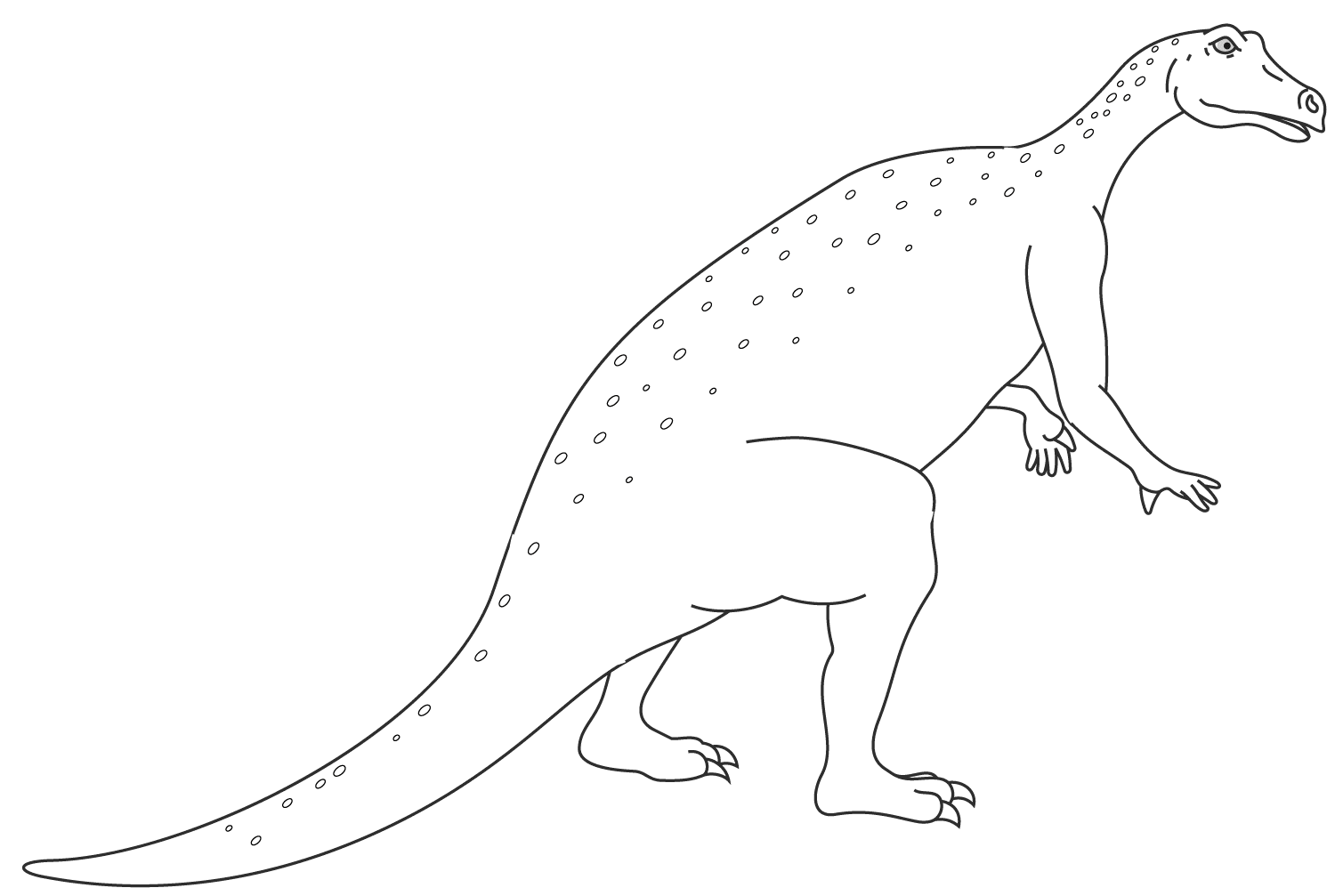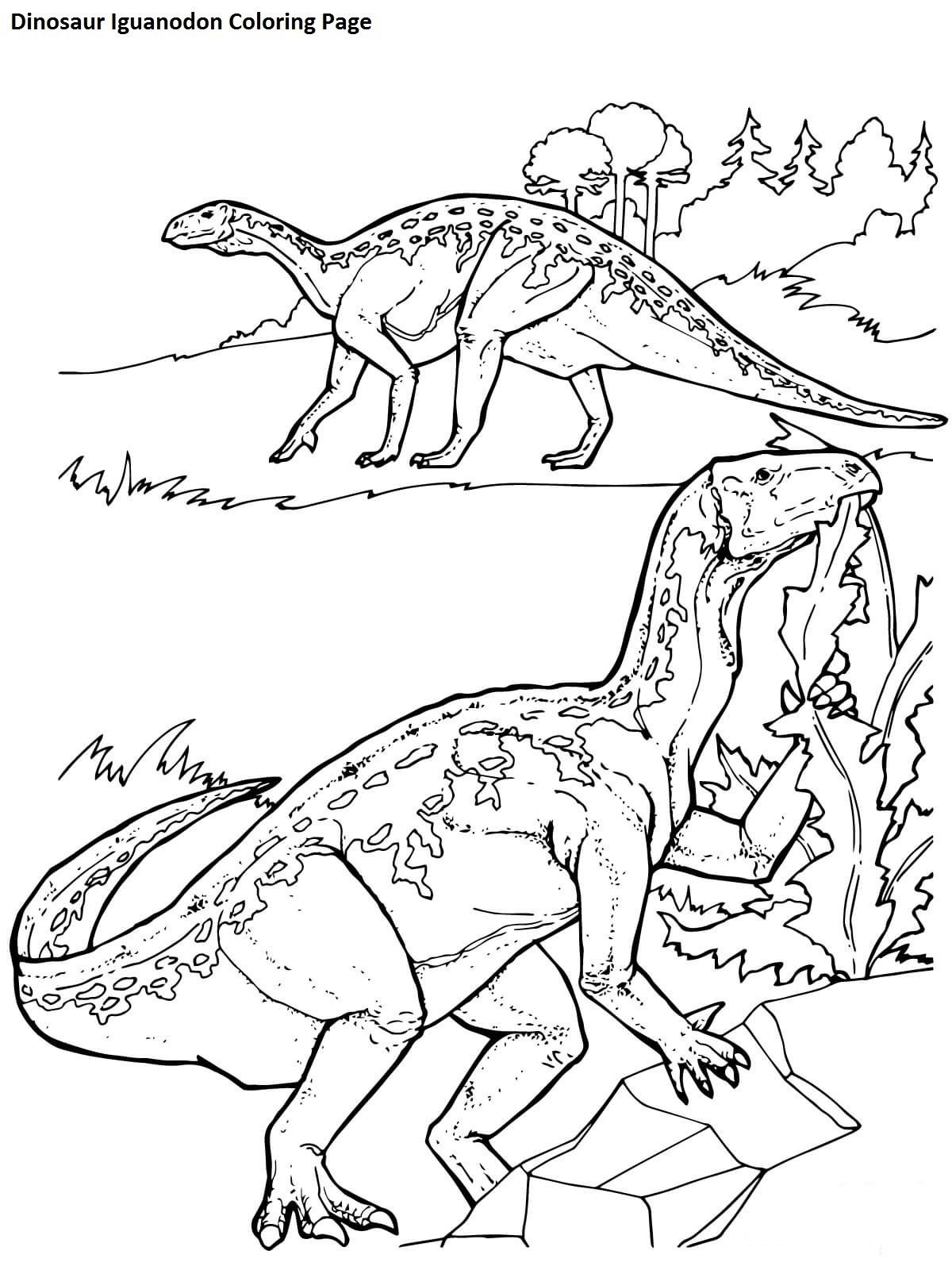The Iguanodon is a herbivorous dinosaur. They can walk on two legs or four legs. Now, get the iguanodon coloring pages below. Then you can print them.
Color its back beige with brown spots. Its belly and head are lighter. Or you can color them with your favorites. Happy coloring.
Free Iguanodon Coloring Pages

cartoon iguanodon coloring pages 
dinosaurs iguanodon coloring pages 
free iguanodon coloring pages 
free printable iguanodon coloring pages 
iguanodon coloring pages for kids 
iguanodon coloring pages printable 
iguanodon coloring pages 
printable iguanodon coloring pages 
realistic iguanodon coloring pages
The iguanodon was widespread in the Lower Cretaceous. It measured 5 m high, between 6 to 10 m long, and weighs over 4 tons. This dinosaur was both bipedal and quadrupedal.
It had a massive body. Fossilized footprints have been found with the trace of the four legs.
However, most of them reveal only the prints of the hind limbs, and it is assumed that juvenile iguanodons had arms that were too short to be used when moving.
The iguanodon is characterized by a powerful thumb that was used to stab carnivores that threatened it.
It was equipped with a horny beak used to tear vegetation, and its flattened teeth allowed it to chew its food.
The position of these reptiles has been much debated. At first, they were considered quadrupeds (based on the idea that they were similar to modern reptiles, such as iguanas).
But when complete specimens were discovered, scientists observed a significant disparity between the animal’s front and back limbs and that it had a heavy tail.
They then compared its characteristics to the anatomy of the kangaroo. The iguanodon was then imagined using its large, muscular tail for support when reaching high vegetation.
More recently, it was discovered that the caudal vertebrae were connected and stiffened by ossified ligaments.
It appears that the tail of the iguanodon served as a balance beam to counterbalance the heavy mass of its body and that it was able to move normally on four legs but also used bipedalism to run. However, this is likely to have remained relatively rare.
Iguanodon was a herbivore. It must have lived mainly in the savannahs of the Mesozoic and probably fed on ferns, conifers, cycads, and ginkgoes, which have been chewed for a long time.
To facilitate its digestion, it had to swallow pebbles called gastroliths which crushed the food inside its stomach.
The first bone (a tibia) of iguanodon was discovered in 1809. A few teeth and other bones were found later in 1819.
At that time, scientists thought that these teeth belonged to a mammal of gigantic size.
However, Gideon Mantell, a geologist, and fossil enthusiast, noticed that the teeth resembled South American iguanas.
The geologist named it iguanodon (iguana tooth) and presented it to other scientists in 1825.
It was the second dinosaur to be discovered (although the term “dinosaur” did not exist at the time).
The primary specimens were found in Europe (England, Belgium, Spain, Germany, France) and the United States (Utah, South Dakota).
Some remains have been discovered in Tunisia, Morocco (Immouzer Marmoucha), Mongolia, Thailand. The most numerous (about thirty) and most complete skeletons were found in 1878 in a coal mine in Bernissart, Belgium.
Nine of them are exhibited in a specialized room of the Museum of Natural Sciences of Belgium in Brussels and the Bernissart Museum.
Both museums humorously admit to having misplaced them (indeed, they are displayed “standing” on their hind limbs), suggesting a bipedal displacement that was only anecdotal.
According to some versions, Gideon Mantell’s wife found the enormous teeth and presented them to her husband, who immediately thought they should belong to a giant lizard.